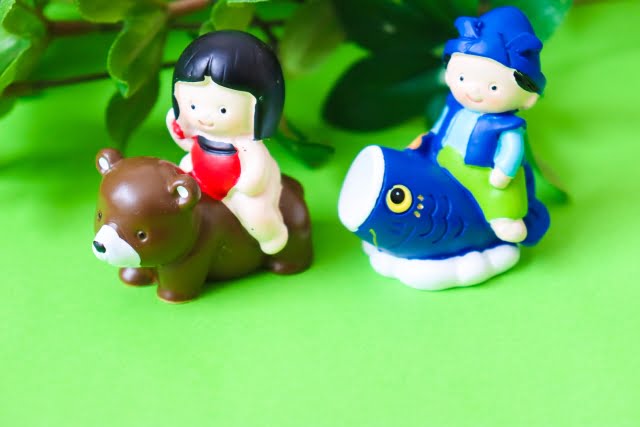If you’ve been to Japan during Golden Week in late April/early May, you’ll have seen Koinobori(carp flags) hanging in the streets. Most of them are in groups of three or five, and they range in color from black, red to blue, and sometimes green and purple.
So why do they fly carp flags in Japan? What does it mean? Is it possible to choose the number and color of carp flags? I’m sure you have these questions. So let’s take a look.
Children’s Day and the Carp Flag

May 5 is the Japanese “Children’s Day” and also the traditional East Asian festival “Duanwu Festival”. On this day, carp flags are hung in every household to wish that children (especially boys) will grow up healthy and have a bright future without illness or disaster.
Japan Pocket Wifi Rental
UNLIMTED DATA SIM CARD
Japan Travel Prepaid SIM card
The reason for hanging carp flags is the old Chinese folklore of the “carp leaping over the dragon gate” (鯉が竜門の滝ると竜となって天をかける). According to legend, the carp in the Yellow River, despite living in murky water, will jump over the Dragon Gate (located in Shanxi Province) and become a dragon if they endure. The carp flag in the air is a symbol of the boy’s ability to overcome hardships and become a dragon, just like the carp.
Also, in Japan, tying a carp flag with a child conveys the message that “we are doing this together because you are important” and is a sign of parental love for the child.
What is the color of the Koinobori?

The Koinobori/carp flag in the Japanese mind is usually a version with three fish. From top to bottom, the colors are black, red, and cyan, and in descending order of size.
The black carp is called “Makori,” which symbolizes the father who is the pillar of the family (called “Daikokuju(a big, black pillar)” in Japanese); the red carp is called “Hikori,” which symbolizes the sun, and like the sun, the mother who gives birth to life.
The next color is the “Kogoi”, which is the green/blue color. Green is the color of spring, symbolizing the revival of everything and the growth of new life, so it is used to represent the children of the family.
However, when the carp flag was first created in the Edo period, there was only one color, black. Therefore, if you can see carp flags in ukiyo-e, they are all depicted in black. In the Meiji period, red was added, and in the modern Showa period, cyan was added. Later on, when there was more than one boy in the family, green or purple was added to supplement the colors.
Children’s Day is actually a boy’s day?

Careful readers may have noticed that in the above statement, we said that Cinco de Mayo Children’s Day is actually a boy’s day, which means that Cinco de Mayo Children’s Day is actually a “boy’s day” in Japan. What is the reason for this?
In fact, in the earliest days, Cinco de Mayo was also celebrated as the “Dragon Boat Festival”. However, when the son of a shogun (the de facto ruler of Japan at the time) was born on May 5, the shogun started hanging carp flags to celebrate the birth of his son and to pray for his growth, and this custom has been passed down to this day.
In the past, if there were only girls in the family, the carp flag would not be hung on May 5. However, with the changes of the times, the children’s day is now being celebrated as a festival for children as a whole, without any distinction between men and women. Now, there are even carp flags for girls in the public eye.
When is Girls’ Day?

In Japan, on March 3, there is a festival called Daughter’s Day (Japanese: Hina Matsuri). On this day, parents set up a stepped display for their daughters with many dolls wearing kimonos.
From the top to the bottom of the stage, there are the Emperor, Empress, and courtesans, the band, attendants, and servants, as well as dowry equipment, bullock carts, heavy boxes, and sedan chairs. In total, there were almost fifteen dolls. In some families, if the dolls are well protected, they are used as dowry for the marriage of their daughters and are passed on to their daughters’ daughters. For families with a long tradition, there are even dolls that date back to the Edo period, and there can be as many as one or two hundred of them, which is very impressive.

GetAround Japan is your number one travel guide, providing the latest information on visiting and living in Japan, with tips on what to eat, things to do, and places to stay.
Whether you’re planning for a trip far in the future, or already in Japan in need of some fresh ideas, our archive of posts will help you find the best way to fill your time and get the most out of your travel experience.
We provide you updates on serious policies that affect visitors and foreign residents while also keeping things light and fun with articles on quirky trends and pop culture.
How do we know how to provide visitors the information they need? Our affiliate company CDJapan Rental provides WIFI and Sim Card rentals to thousands of visitors to Japan every year. In other words, we are constantly in touch with and listening to the voices of our customers, and infuse our blog with the information they ask us for.
For inquiries, contact us here
=Company Information=
CDJapan Rental (Neowing Corporation) 1-10-15-3F Nihonbashi Horidome Chuo, Tokyo 103-0012, Japan
Japan Pocket Wifi Rental
UNLIMTED DATA SIM CARD
Japan Travel Prepaid SIM card




